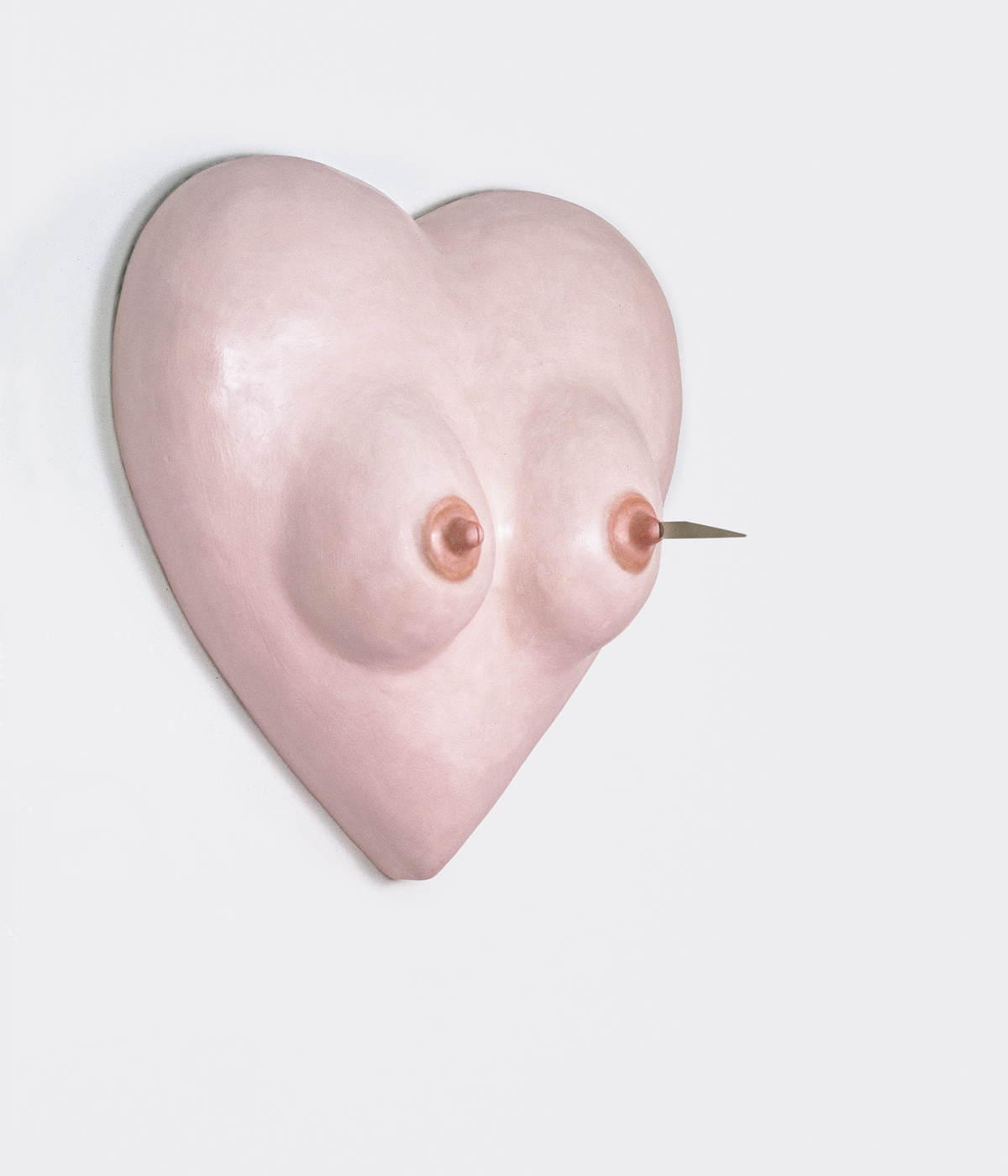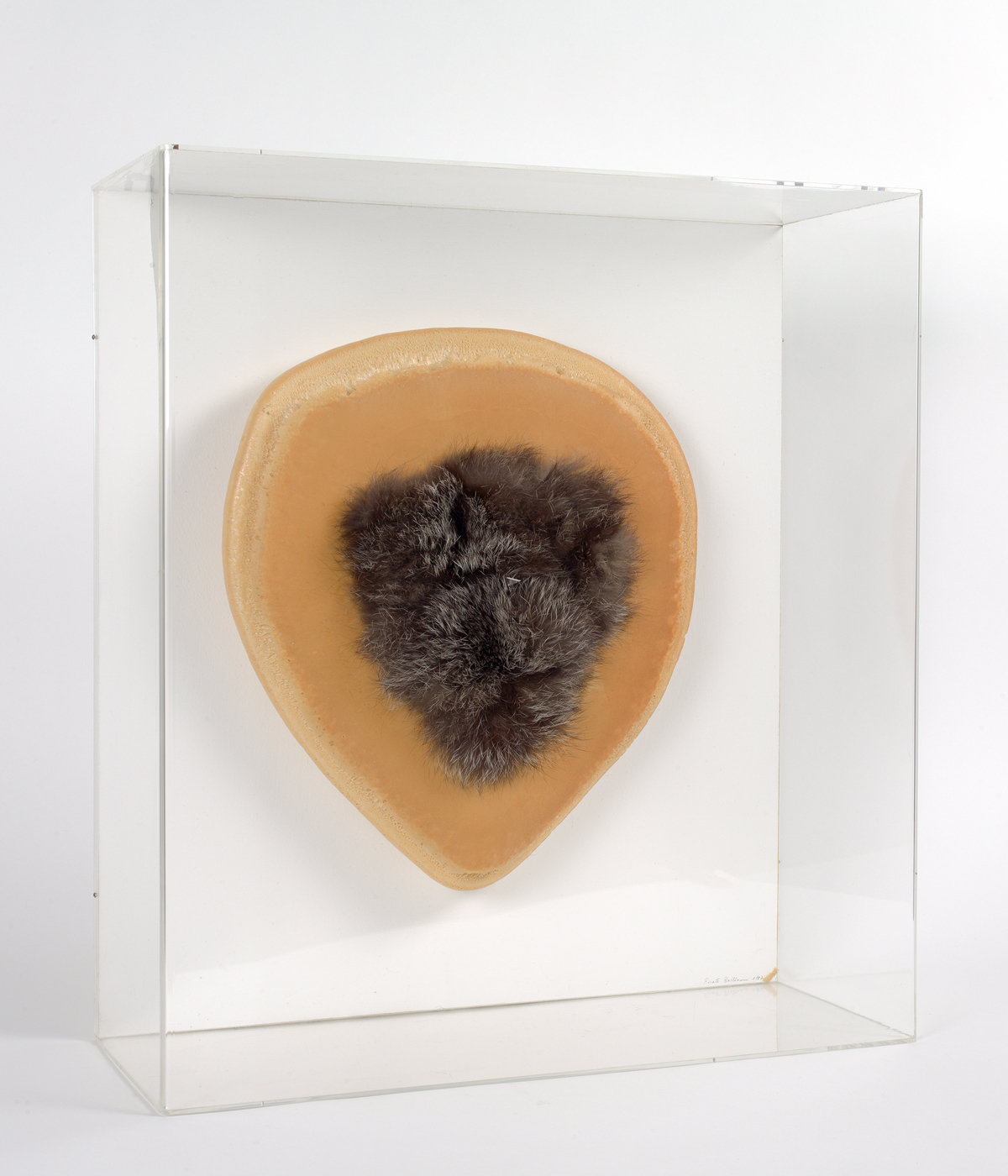Surrealism as feminist resistance: artists against fascism in Leeds
‘The Traumatic Surreal’ at the Henry Moore Institute, unpacks the generational trauma left by Nazism for postwar women

How can surrealism be reimagined as feminist resistance? This is the question that drives ‘The Traumatic Surreal’ at the Henry Moore Institute, an exhibition that unpacks the generational trauma left by Nazism for postwar women. Drawing on co-curator Patricia Allmer’s book of the same name, it features work by Germanophone artists who use surrealist sculptural traditions to challenge the Nazi credo of Kinder, Kirche, Küche (Children, Church, Kitchen). Under a regime that enforced women’s subjugation to domesticity, cages – both literal and figurative – severed tails, blades, feathers, and hair recur throughout.

Renate Bertlmann, Ex Voto 1985
Coinciding with the centenary of the Surrealist Manifesto, ‘The Traumatic Surreal’ also critiques the sexist leanings of surrealist art: eroticising women and infantilising them, too. In 1924, poet André Breton lamented the formal constraints of realism and rationality, urging artists and writers to explore dreams, hallucinations, and unfiltered thought instead. The resulting art gave us mirage-like landscapes and dripping clocks, elevating figures like Salvador Dalí and René Magritte to household names. But even ostensibly ‘radical’ surrealists were no less prone to violent depictions of the female body – think of Hans Bellmer’s dismembered dolls and Helmut Newton’s sadist images.
Taking this as their cue, the artists featured here reappropriate the movement’s shock tactics of fragmenting femininity into eroticised part-objects – lips, feet, and hands. Take, for instance, Renate Bertlmann’s Carmen - enfant terrible (2001): a bright red fabric and Perspex sculpture complete with a pink Godemiche dildo. Looking at Ex Voto (1985) – a pair of heart-shaped breasts – head-on, this view conceals a blade protruding from the nipple. The kitsch quality of Bertlmann’s sculptures is also echoed by Ursula’s Pandora’s Large Cabinet (1966), a carnivalesque display of colour and furs from a coat that belonged to the artist’s mother.

Pipilotti Rist, Open My Glade (Flatten), 2000, video installation by Pipilotti Rist (video still)
Early surrealist objects often juxtaposed pieces associated with femininity, such as domestic items (irons, spoons), or clothing (shoes, gloves). Combining these objects and obfuscating them of their original meaning, it’s this process of ‘collocation’ that is key for Allmer. Meret Oppenheim’s severed squirrel tail in the beer glass contrasts the soft femininity of the fur with the firm masculinity of the glass. Elsewhere, Eva Wipf’s gilded shrine gestures to her own Catholic heritage, filled with allusions to Klimt’s Tree of Life and several pilgrimage shrines.
A fitting opener to the show, Bady Minck’s dark, avant-garde short film, La belle est la bête (2005), begins with a shot of a furry tongue. Like fascism’s eroticised fantasies of women, fascism’s fetishisation of animal qualities are likewise rooted in ideas of power and submission. Collectively these sculptures, with their raw and monstrous femininity, show the transgressive power of art – and surrealism – as a dialectic for bodily freedom. Here, the monster isn’t just something to fear; it’s a way to challenge taboos about the body, turning disruption and undoing into a creative act. As Allmer points out, feminist protests in Germany have always been, at their core, acts of resistance against fascism.
‘The Traumatic Surreal’ is at the Henry Moore Institute, Leeds, until 16 March 2025
Wallpaper* Newsletter
Receive our daily digest of inspiration, escapism and design stories from around the world direct to your inbox.

Ursula, Kopfobjekt / Head Object 1971 Oil on polyester resin, fur. Courtesy Museum Ludwig. Photo: © Rheinischem Bildarchiv Cologne rheinisches-bildarchiv.de

Renate Bertlmann, Fellherz mit Messer / Fur Heart with Knife 1987 © Renate Bertlmann / Bildrecht Vienna / DACS 2024
Katie Tobin is a culture writer and a PhD candidate in English at the University in Durham. She is also a former lecturer in English and Philosophy.
-
 Titanium watches are strong, light and enduring: here are some of the best
Titanium watches are strong, light and enduring: here are some of the bestBrands including Bremont, Christopher Ward and Grand Seiko are exploring the possibilities of titanium watches
By Chris Hall
-
 Warp Records announces its first event in over a decade at the Barbican
Warp Records announces its first event in over a decade at the Barbican‘A Warp Happening,' landing 14 June, is guaranteed to be an epic day out
By Tianna Williams
-
 Cure your ‘beauty burnout’ with Kindred Black’s artisanal glassware
Cure your ‘beauty burnout’ with Kindred Black’s artisanal glasswareDoes a cure for ‘beauty burnout’ lie in bespoke design? The founders of Kindred Black think so. Here, they talk Wallpaper* through the brand’s latest made-to-order venture
By India Birgitta Jarvis
-
 Meet the Turner Prize 2025 shortlisted artists
Meet the Turner Prize 2025 shortlisted artistsNnena Kalu, Rene Matić, Mohammed Sami and Zadie Xa are in the running for the Turner Prize 2025 – here they are with their work
By Hannah Silver
-
 The art of the textile label: how British mill-made cloth sold itself to Indian buyers
The art of the textile label: how British mill-made cloth sold itself to Indian buyersAn exhibition of Indo-British textile labels at the Museum of Art & Photography (MAP) in Bengaluru is a journey through colonial desire and the design of mass persuasion
By Aastha D
-
 From counter-culture to Northern Soul, these photos chart an intimate history of working-class Britain
From counter-culture to Northern Soul, these photos chart an intimate history of working-class Britain‘After the End of History: British Working Class Photography 1989 – 2024’ is at Edinburgh gallery Stills
By Tianna Williams
-
 From activism and capitalism to club culture and subculture, a new exhibition offers a snapshot of 1980s Britain
From activism and capitalism to club culture and subculture, a new exhibition offers a snapshot of 1980s BritainThe turbulence of a colourful decade, as seen through the lens of a diverse community of photographers, collectives and publications, is on show at Tate Britain until May 2025
By Anne Soward
-
 Jasleen Kaur wins the Turner Prize 2024
Jasleen Kaur wins the Turner Prize 2024Jasleen Kaur has won the Turner Prize 2024, recognised for her work which reflects upon everyday objects
By Hannah Silver
-
 Peggy Guggenheim: ‘My motto was “Buy a picture a day” and I lived up to it’
Peggy Guggenheim: ‘My motto was “Buy a picture a day” and I lived up to it’Five years spent at her Sussex country retreat inspired Peggy Guggenheim to reframe her future, kickstarting one of the most thrilling modern-art collections in history
By Caragh McKay
-
 Please do touch the art: enter R.I.P. Germain’s underground world in Liverpool
Please do touch the art: enter R.I.P. Germain’s underground world in LiverpoolR.I.P. Germain’s ‘After GOD, Dudus Comes Next!’ is an immersive installation at FACT Liverpool
By Will Jennings
-
 ‘Regeneration and repair is a really important part of how I work’: Bharti Kher at Yorkshire Sculpture Park
‘Regeneration and repair is a really important part of how I work’: Bharti Kher at Yorkshire Sculpture ParkBharti Kher unveils the largest UK museum exhibition of her career at Yorkshire Sculpture Park
By Will Jennings